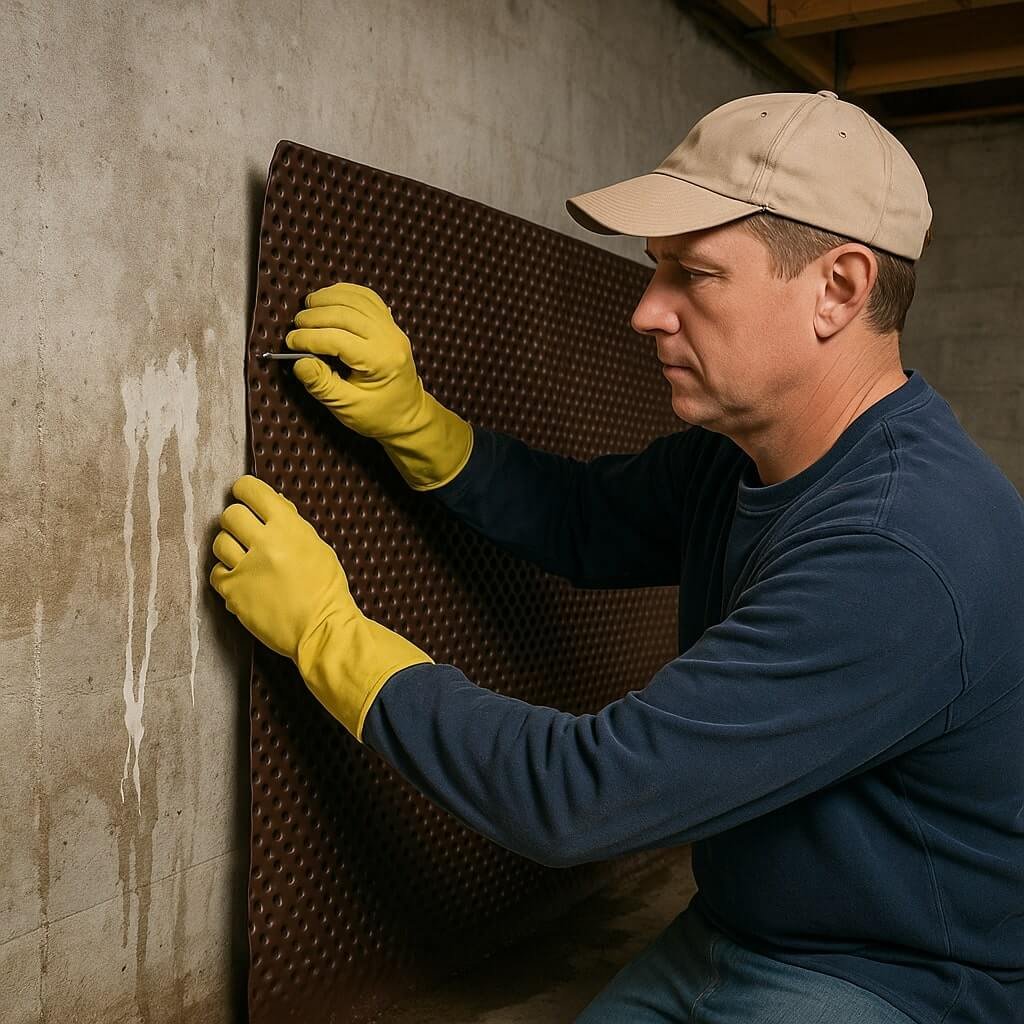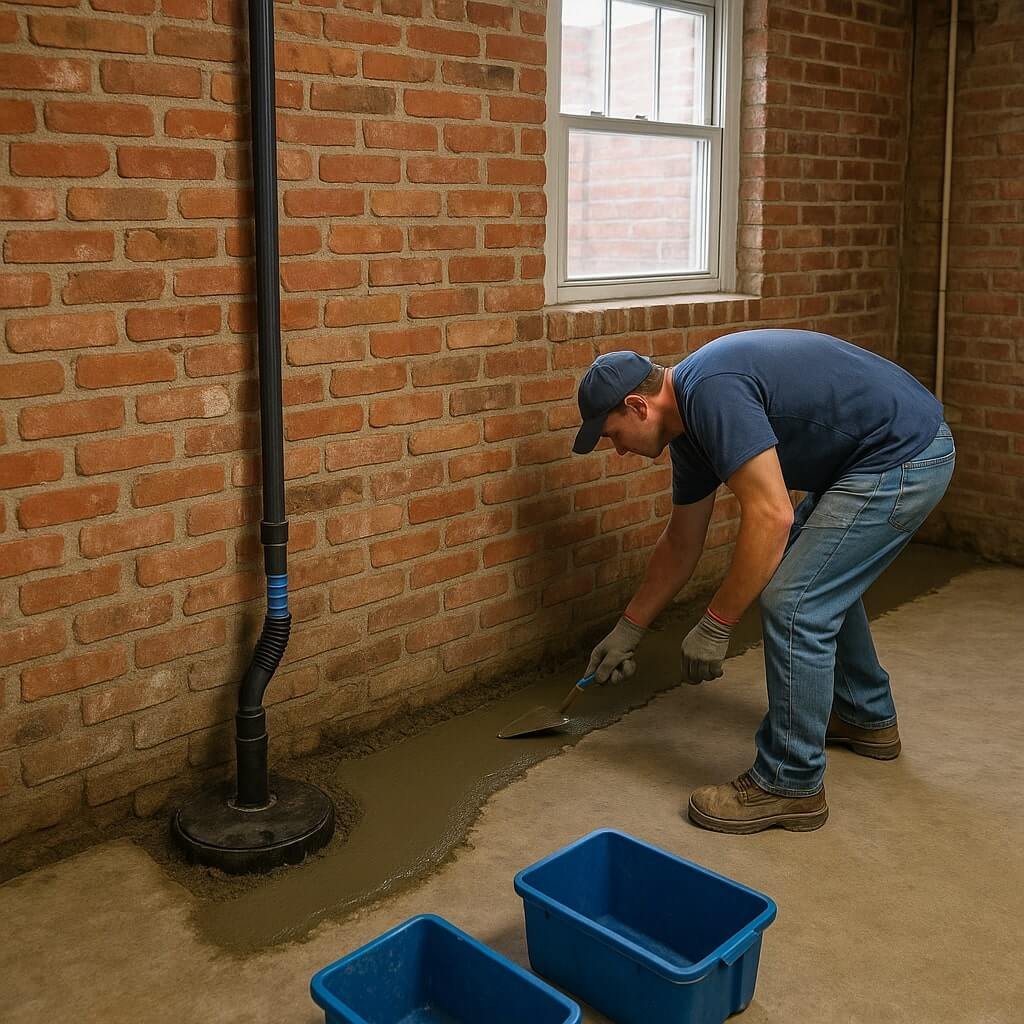When it comes to basement waterproofing, many homeowners mistakenly rely on inadequate methods that only mask the symptoms of water intrusion. You might think that applying sealants or installing simple interior drainage systems will resolve the issue, but these solutions often fail to address the underlying causes. This oversight can lead to serious consequences like mold growth and structural damage. Understanding what truly constitutes inadequate waterproofing is essential for safeguarding your home.
Key Takeaways
- Sole reliance on sealants can mask moisture issues without addressing the root causes.
- Interior drainage systems may fail to prevent outside water from entering the basement.
- Landscaping solutions that do not properly redirect water away from the foundation are inadequate.
- Quick fixes like interior sealants can lead to moisture retention and mold growth.
- Overlooking professional assessments may result in ineffective and costly waterproofing solutions.
Understanding Basement Waterproofing
When you think about basement waterproofing, it’s essential to understand that this process isn’t just about keeping water out—it’s about protecting your home’s foundation and interior from moisture damage.
Effective waterproofing solutions address the root causes of basement moisture, including poor drainage and hydrostatic pressure. You’ll want to take into account internal and external methods, like installing sump pumps, drainage systems, and applying waterproof coatings.
Common Inadequate Methods

While effective basement waterproofing is essential for protecting your home, many homeowners rely on inadequate methods that fail to address underlying issues.
These techniques often overlook the root causes of moisture infiltration and can lead to further damage, such as cracked foundations.
- Relying solely on sealants that only mask moisture issues
- Installing interior drainage systems that don’t prevent outside water entry
- Using landscaping solutions that fail to redirect water away from the foundation
The Role of Exterior Waterproofing
Exterior waterproofing is essential for effective basement protection, as it primarily relies on robust drainage systems to channel water away from your foundation.
You’ll want to take into account common waterproofing materials, such as membranes and coatings, which can greatly enhance your home’s resilience against moisture intrusion.
Proper installation best practices guarantee that these materials function effectively, safeguarding your basement from water damage.
Importance of Drainage Systems
Effective drainage systems are essential for maintaining a dry and healthy basement environment. Proper water management protects your home from moisture-related issues, which can lead to structural damage.
Implementing suitable drainage techniques guarantees that water is diverted away from your foundation.
- Prevents mold growth: Reduces humidity levels in your basement.
- Protects structural integrity: Minimizes the risk of cracks and foundation issues.
- Enhances property value: A dry basement is more appealing to potential buyers.
Investing in a reliable drainage system can save you costly repairs and maintain your home’s overall health.
Don’t underestimate the importance of proper drainage!
Common Waterproofing Materials
When it comes to basement waterproofing, choosing the right materials is crucial for long-term effectiveness. Waterproofing membranes, often made from materials like PVC or TPO, create a barrier against moisture intrusion.
These durable sheets are applied to exterior walls to direct water away from your foundation. Additionally, various sealant types, such as polyurethane and silicone, can be used to fill cracks and joints, providing an extra layer of protection.
Selecting high-quality waterproofing materials guarantees your basement remains dry and prevents costly repairs down the line. Remember, investing in the right products greatly impacts your home’s overall moisture management strategy.
Installation Best Practices
Although many homeowners focus on materials, proper installation techniques are essential for achieving ideal exterior waterproofing results.
Adhering to waterproofing standards guarantees long-lasting protection against moisture intrusion. Here are some best practices to follow:
- Excavate to the foundation’s footer for complete access.
- Apply a waterproof membrane uniformly, paying attention to seams.
- Guarantee proper drainage installation, directing water away from the foundation.
The Risks of Interior Sealants
While interior sealants may seem like a quick fix for basement moisture issues, they often fail to address the underlying problems.
One significant drawback of using interior sealants is that they can create moisture retention issues, trapping water between the sealant and the wall. This not only leads to mold growth but also compromises the structural integrity of your basement.
Additionally, these sealants can degrade over time, requiring frequent reapplication and maintenance, which adds to your costs.
Ultimately, relying solely on interior sealants can exacerbate moisture problems rather than resolve them, putting your home at risk for more severe damage.
Misconceptions About Drainage Systems

Many homeowners mistakenly believe that installing a drainage system alone will completely eliminate basement moisture problems. This is one of several drainage myths that can mislead you about system effectiveness.
While drainage systems are essential, they’re not a silver bullet.
Drainage systems are crucial, but they alone won’t solve all moisture problems.
- They don’t address water seepage through walls.
- They require regular maintenance to prevent clogs.
- They work best when combined with proper grading and exterior waterproofing.
Understanding these misconceptions will help you make informed decisions about your basement waterproofing strategy.
Relying solely on drainage systems could leave you facing persistent moisture issues and costly repairs.
Importance of Professional Assessment
When you’re dealing with basement moisture issues, seeking a professional assessment can greatly enhance your understanding of the problem.
A professional evaluation identifies the specific sources of moisture intrusion, whether from groundwater, plumbing leaks, or poor drainage.
During an expert consultation, you’ll gain insights into the most effective waterproofing methods tailored to your home’s needs.
This approach not only saves you time and money but also prevents future complications.
Relying on your own judgment might lead to inadequate solutions, so investing in expert advice guarantees a thorough examination and a reliable waterproofing strategy for your basement.
Conclusion
Inadequate basement waterproofing methods can lead to significant moisture issues, mold growth, and costly repairs. Relying solely on sealants or improper drainage systems masks the problem instead of addressing it. To effectively protect your basement, it’s essential to implement thorough strategies that tackle the source of water infiltration. Consider professional assessment to identify the best course of action for your specific situation, ensuring long-term protection and structural integrity for your home.




